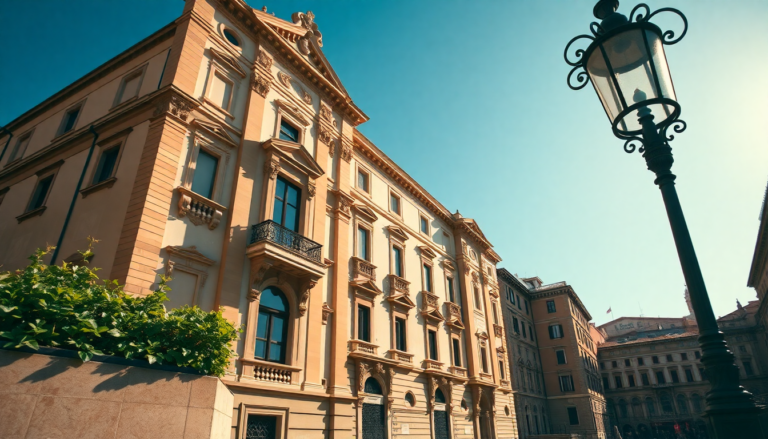Argomenti trattati
As you wander through the historic streets of Rome, can you feel the rich tapestry of history, art, and culture wrapping around you? Among the most striking landmarks, Palazzo Madama stands proudly, its façade whispering tales of the Renaissance and its pivotal role in Italian politics. This architectural gem, with its baroque elegance and storied past, invites you to explore, revealing layers of history that intertwine with the evolution of the Republic.
A Storied Origin Steeped in Tradition
The history of Palazzo Madama is as intricate as the architecture itself. Can you imagine its origins, dating back to 1478, when the site was granted to the French by the monks of the Imperial Abbey of Farfa? Initially intended to accommodate French pilgrims, the building underwent significant transformation under the auspices of the Medici family. It was Cardinal Giovanni de’ Medici, the future Pope Leo X and son of Lorenzo the Magnificent, who purchased the property in 1505, setting in motion renovations designed to reflect the Medici’s opulence and influence.
Following the death of Leo X in 1521, Palazzo Madama passed to his cousin, Giulio de’ Medici, who would later ascend as Pope Clement VII. By 1534, the estate came into the hands of Alessandro de’ Medici, who bequeathed it to his wife, Margherita d’Austria, affectionately known as “Madama.” This connection not only sealed its name in history but also added a personal touch to its legacy.
The 17th century heralded a significant transformation, where major renovations sculpted the palazzo into the magnificent baroque structure we admire today. Completed in 1642, the façade showcases intricate details that reflect the artistic prowess of the era, while the interiors boast grand salons adorned with historical furnishings and frescoes that capture the imagination of every visitor.
The Legacy and Significance of Palazzo Madama
Today, Palazzo Madama is not just a relic of the past; it serves as the esteemed seat of the Italian Senate, where legislative activities unfold, and the voices of senators resonate within its walls. Here, laws are debated, government actions scrutinized, and the interests of Italian citizens safeguarded. The building houses essential offices, including that of the Senate President, as well as significant spaces such as the Legislative Hall, the Sala Maccari, and the Senate Library.
Interestingly, the palazzo’s name has transcended its architectural identity, becoming embedded in the fabric of Roman dialect. The term “La madama” is still used to refer to law enforcement, a nod to the historical role the building played as a judicial center. Isn’t it fascinating how language evolves alongside history?
Experiencing Palazzo Madama Today
Visiting Palazzo Madama offers you a chance to step into a living history that has shaped Italy’s political landscape. Guided tours, lasting approximately fifty minutes, provide an enlightening glimpse into the building’s rich heritage. However, access is limited to specific dates, with reservations required for private citizens. Be sure to check the official site for available dates and immerse yourself in the storied corridors where history continues to unfold.
As you leave Palazzo Madama, the echoes of its past will linger in your mind, reminding you that behind every arch and column lies a narrative waiting to be unveiled. It’s a testament to the enduring spirit of Rome, where every stone is steeped in history, and every visit is a journey through time. Are you ready to uncover the stories that await you in this magnificent city?

